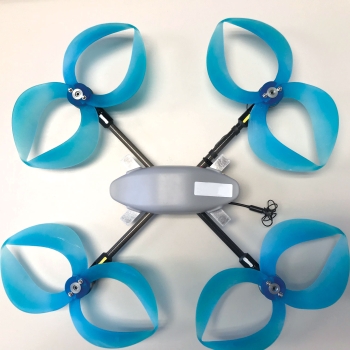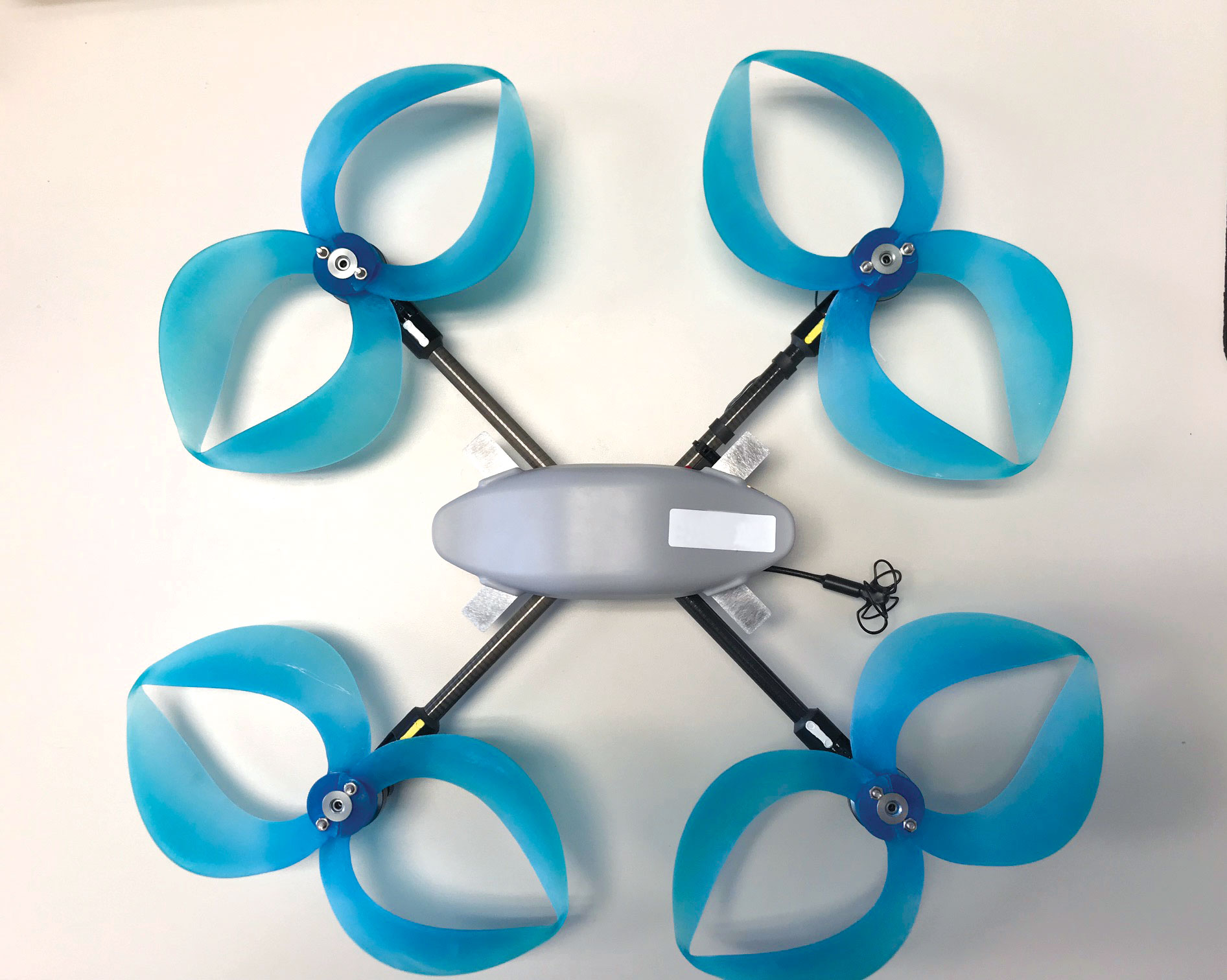Toroidal Propeller

The toroidal propeller allows a small multirotor unpiloted aircraft, or drone, to operate more quietly than current drones that use propeller forms unchanged since the beginning of aviation. By enabling a drone that is less of an acoustic annoyance, this propeller may accelerate the acceptance of such aircraft for a wide range of uses — for example, aerial deliveries, cinematography, industrial or infrastructure inspections, and agricultural monitoring.
Challenge
Small, multirotor remotely controlled aircraft, or drones, have been proposed for various services — package delivery, aerial photo/videography, search and rescue, and agricultural surveillance. The low cost to manufacture and operate drones, and decreased carbon emissions make them attractive to commercial services. Because drones can fly into tight spaces, such as urban neighborhoods, canyons, and disaster zones, they offer an alternative to sending humans into potentially dangerous areas. One factor that has limited the deployment of drones for these varied uses is the noise that they generate. Psychoacoustic experiments conducted in 2017 by NASA Langley Research Center showed that humans reported a higher level of sensitivity to noise produced by small multirotor drones than to noise from other traffic. Thus, quieter propellers could accelerate public acceptance and commercial adoption of drones.
Solution

Our quiet toroidal propeller consists of two blades looping together so that the tip of one blade curves back into the other. This closed-form structure minimizes the drag effects of swirling air tunnels (i.e., vortices) created at the tips of blades and strengthens the overall stiffness of the propeller. These features reduce the propeller’s acoustic signature. Tests of prototype toroidal propellers on commercial quadcopters demonstrated thrust levels comparable to those of conventional propellers at similar power levels. Reduced sound levels allowed toroidal-propeller-equipped drones to operate without taxing human hearing at a distance half that of typical operation.
Benefits
- Decreases signals in the frequency range to which humans are most sensitive
- Reduces noise without requiring supplementary components that add weight and increase power draw
- Lessens the likelihood that the spinning propeller will cut, catch, or clip objects or surfaces in the drone’s path
- Achieves thrust comparable to that of a multirotor drone propeller
- Allows reliable fabrication with additive manufacturing techniques that make it possible to customize the propeller for various multirotor models and types
Additional Resources
U.S. Patent 10,836,466